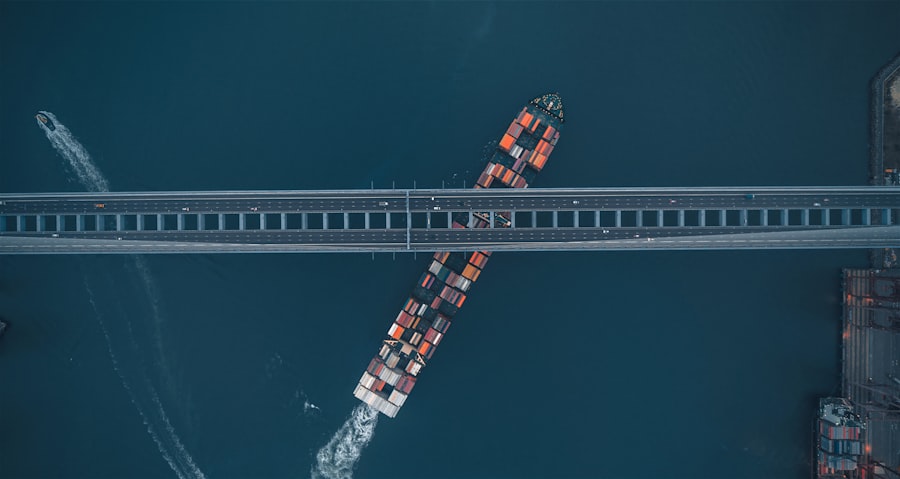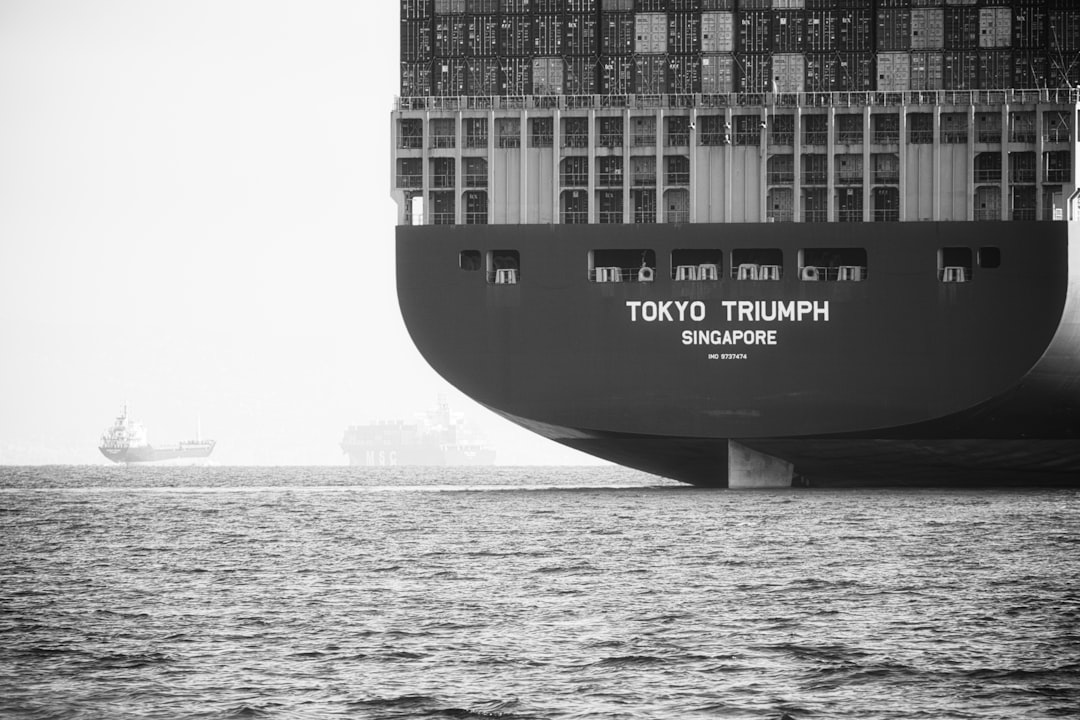Commercial shipping serves as the backbone of global trade, facilitating the movement of goods across vast oceans and connecting economies worldwide. However, this vital industry is not without its vulnerabilities. The intricate web of supply chains, the reliance on technology, and the geopolitical landscape all contribute to a myriad of risks that threaten the safety and efficiency of maritime operations.
As the world becomes increasingly interconnected, understanding these vulnerabilities is essential for stakeholders in the shipping industry, from shipowners to governments. The vulnerabilities in commercial shipping are multifaceted, encompassing physical, technological, and regulatory dimensions. The industry’s reliance on complex logistics and digital systems has made it susceptible to various threats that can disrupt operations and compromise safety.
As such, a comprehensive examination of these vulnerabilities is crucial for developing effective strategies to mitigate risks and enhance the resilience of commercial shipping.
Key Takeaways
- Commercial shipping faces a range of threats including piracy, cyber attacks, environmental risks, and geopolitical tensions.
- Cybersecurity risks in commercial shipping are a growing concern, with potential for disruption to operations and safety.
- Piracy and armed robbery at sea continue to pose significant security risks to commercial shipping, particularly in certain regions.
- Environmental risks and regulations are important considerations for commercial shipping, with potential for both operational and reputational impact.
- Geopolitical tensions and security concerns can impact commercial shipping, requiring careful navigation and international cooperation.
Types of Threats Faced by Commercial Shipping
The threats faced by commercial shipping can be broadly categorized into several types, each presenting unique challenges. One of the most pressing concerns is the rise of cyber threats, which have become increasingly sophisticated in recent years. Cyberattacks can target navigation systems, cargo management software, and communication networks, potentially leading to catastrophic consequences.
The interconnected nature of modern shipping means that a single breach can have far-reaching implications, affecting not only the targeted vessel but also the entire supply chain. In addition to cyber threats, physical security risks remain a significant concern for commercial shipping.
These incidents can result in loss of cargo, financial losses for shipping companies, and even threats to crew safety. Furthermore, environmental risks, such as oil spills and pollution, pose challenges not only to the shipping industry but also to global ecosystems and coastal communities.
Cybersecurity Risks in Commercial Shipping

As technology continues to evolve, so too do the cybersecurity risks associated with commercial shipping. The increasing reliance on digital systems for navigation, communication, and cargo management has created new vulnerabilities that malicious actors can exploit. Cyberattacks on shipping companies can lead to significant disruptions, including delays in delivery schedules and financial losses due to ransom demands or system recovery costs.
Moreover, the potential for cyberattacks extends beyond individual vessels; entire fleets can be compromised if a central system is breached. The consequences of such attacks can ripple through global supply chains, affecting industries far removed from the maritime sector. As a result, stakeholders in commercial shipping must prioritize cybersecurity measures to safeguard their operations against evolving threats.
Piracy and Armed Robbery at Sea
| Year | Incidents | Seafarers Kidnapped | Ships Hijacked |
|---|---|---|---|
| 2017 | 180 | 170 | 15 |
| 2018 | 201 | 141 | 11 |
| 2019 | 162 | 134 | 9 |
| 2020 | 195 | 135 | 7 |
Despite advancements in maritime security, piracy and armed robbery at sea remain persistent threats to commercial shipping. Certain regions, particularly off the coasts of Somalia and West Africa, have been notorious for high levels of piracy activity. These criminal acts not only endanger the lives of crew members but also result in substantial financial losses for shipping companies due to ransom payments and increased insurance costs.
Efforts to combat piracy have included international naval patrols and cooperation among nations to enhance maritime security. However, the effectiveness of these measures can vary based on regional dynamics and the commitment of individual countries to address the issue. As long as economic disparities exist and law enforcement capabilities remain limited in certain areas, piracy will continue to pose a significant challenge to commercial shipping.
Environmental Risks and Regulations
The commercial shipping industry faces increasing scrutiny regarding its environmental impact. Oil spills, ballast water discharge, and greenhouse gas emissions are just a few examples of the environmental risks associated with maritime operations. These issues not only threaten marine ecosystems but also attract regulatory attention from governments and international organizations seeking to enforce stricter environmental standards.
In response to growing concerns about environmental sustainability, various regulations have been implemented to mitigate the industry’s ecological footprint. The International Maritime Organization (IMO) has introduced measures aimed at reducing emissions from ships and promoting cleaner technologies. However, compliance with these regulations can be challenging for shipping companies, particularly smaller operators with limited resources.
Balancing economic viability with environmental responsibility remains a critical challenge for the industry.
Geopolitical Tensions and Security Concerns

Geopolitical tensions can significantly impact commercial shipping operations, creating an environment fraught with uncertainty. Disputes over territorial waters, trade routes, and maritime boundaries can lead to heightened security concerns for vessels operating in contested regions. For instance, tensions in the South China Sea have raised alarms among shipping companies navigating these waters, prompting them to reassess their risk management strategies.
Additionally, sanctions imposed by governments can disrupt trade flows and complicate shipping logistics.
The interplay between geopolitics and maritime security underscores the need for shipping stakeholders to remain vigilant and adaptable in an ever-changing global environment.
Impact of Global Pandemics on Commercial Shipping
The COVID-19 pandemic has underscored the vulnerabilities of commercial shipping in unprecedented ways. Lockdowns and travel restrictions led to significant disruptions in supply chains, causing delays in shipments and shortages of essential goods worldwide. The pandemic highlighted the industry’s reliance on global interconnectedness while exposing weaknesses in contingency planning and crisis management.
Moreover, health protocols implemented during the pandemic affected crew changes and operational efficiency. Shipping companies faced challenges in ensuring the safety of their personnel while maintaining operational continuity. The lessons learned from this global crisis will likely shape future strategies for resilience in commercial shipping as stakeholders seek to prepare for potential disruptions.
Security Measures and Solutions for Commercial Shipping
To address the myriad threats facing commercial shipping, stakeholders must implement robust security measures tailored to their specific needs. This includes investing in advanced cybersecurity technologies to protect digital systems from cyberattacks. Regular training for crew members on cybersecurity best practices is also essential to foster a culture of vigilance within organizations.
In addition to cybersecurity measures, physical security protocols must be enhanced to deter piracy and armed robbery at sea. This may involve employing armed security personnel on vessels operating in high-risk areas or utilizing technology such as drones for surveillance purposes. Collaboration with international naval forces can further bolster maritime security efforts by providing additional resources and intelligence sharing.
International Cooperation and Maritime Security
International cooperation is paramount in addressing the complex challenges facing commercial shipping today. Collaborative efforts among nations can enhance maritime security through information sharing, joint naval operations, and coordinated responses to emerging threats. Organizations such as the International Maritime Organization (IMO) play a crucial role in facilitating dialogue among member states and establishing best practices for maritime safety.
Furthermore, regional partnerships can strengthen security frameworks by addressing specific threats unique to certain areas. For instance, initiatives aimed at combating piracy in the Gulf of Aden have involved collaboration between countries bordering the region as well as international naval forces. By fostering a spirit of cooperation, nations can work together to create a safer maritime environment for commercial shipping.
Future Challenges and Emerging Threats
As the commercial shipping industry evolves, it will inevitably face new challenges and emerging threats that require proactive responses. Climate change poses significant risks to maritime operations, with rising sea levels and extreme weather events potentially disrupting trade routes and damaging infrastructure. Shipping companies must adapt their strategies to account for these environmental changes while also addressing regulatory pressures related to sustainability.
Additionally, advancements in technology may introduce new vulnerabilities that could be exploited by malicious actors. The rise of autonomous vessels presents both opportunities for efficiency gains and challenges related to cybersecurity and regulatory compliance. As the industry navigates these complexities, continuous innovation and adaptation will be essential for ensuring resilience against future threats.
Ensuring the Security and Resilience of Commercial Shipping
In conclusion, the vulnerabilities faced by commercial shipping are diverse and multifaceted, encompassing cyber threats, piracy, environmental risks, geopolitical tensions, and more. As global trade continues to expand, stakeholders must prioritize security measures that address these challenges while fostering international cooperation to enhance maritime safety. The lessons learned from recent crises, such as the COVID-19 pandemic, underscore the importance of resilience in navigating an unpredictable world.
By investing in advanced technologies, enhancing training programs, and collaborating across borders, the commercial shipping industry can better prepare itself for future challenges while ensuring its vital role in facilitating global trade remains secure and resilient.
In the rapidly evolving landscape of global trade, the vulnerabilities of commercial shipping have become a critical concern for industry stakeholders. These vulnerabilities can range from cybersecurity threats to physical risks posed by geopolitical tensions and environmental challenges. An insightful article that delves into these issues can be found on MyGeoQuest, which explores the multifaceted nature of these vulnerabilities and offers strategies for mitigation. For a deeper understanding, you can read more about these challenges and potential solutions by visiting this related article.
WATCH NOW! Unlocking Disaster: 7 Choke Points That Could Fracture Our Connected World Overnight
FAQs
What are the main vulnerabilities in commercial shipping?
The main vulnerabilities in commercial shipping include piracy, cyber attacks, smuggling, terrorism, and natural disasters.
How does piracy affect commercial shipping?
Piracy poses a significant threat to commercial shipping by targeting vessels for robbery, kidnapping, and ransom. It can disrupt trade routes and increase insurance costs for shipping companies.
What are the potential impacts of cyber attacks on commercial shipping?
Cyber attacks can disrupt the operations of commercial shipping companies, leading to financial losses, data breaches, and potential safety risks for crew members and cargo.
How does smuggling pose a threat to commercial shipping?
Smuggling of illegal goods, such as drugs or weapons, can compromise the security and integrity of commercial shipping operations. It can also lead to legal and financial repercussions for shipping companies.
What is the risk of terrorism in commercial shipping?
Terrorism poses a threat to commercial shipping by targeting vessels or ports for attacks, which can result in loss of life, damage to infrastructure, and disruption of global trade.
How do natural disasters impact commercial shipping?
Natural disasters, such as hurricanes, tsunamis, or earthquakes, can damage vessels, ports, and cargo, leading to significant financial losses and logistical challenges for commercial shipping companies.
